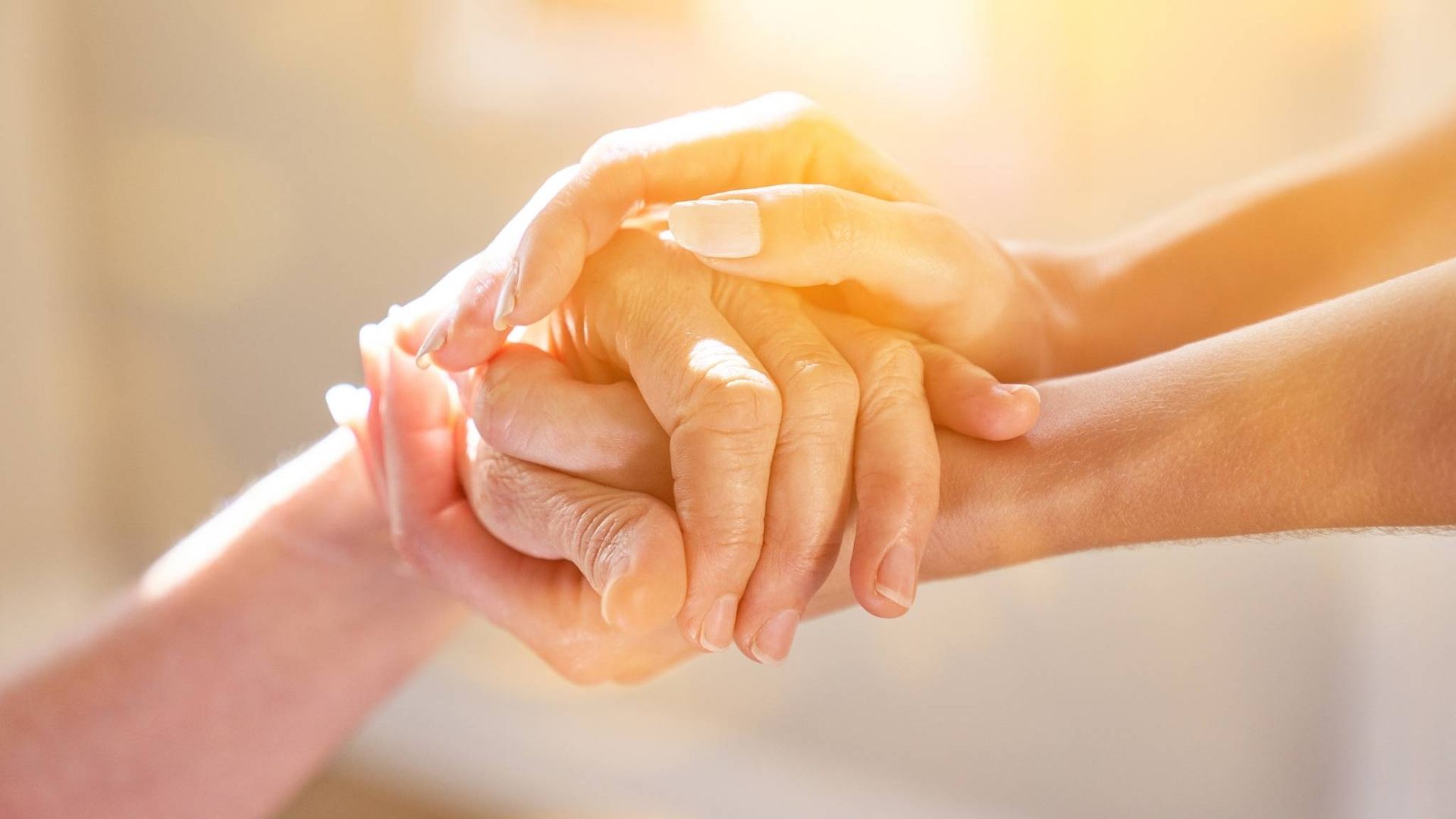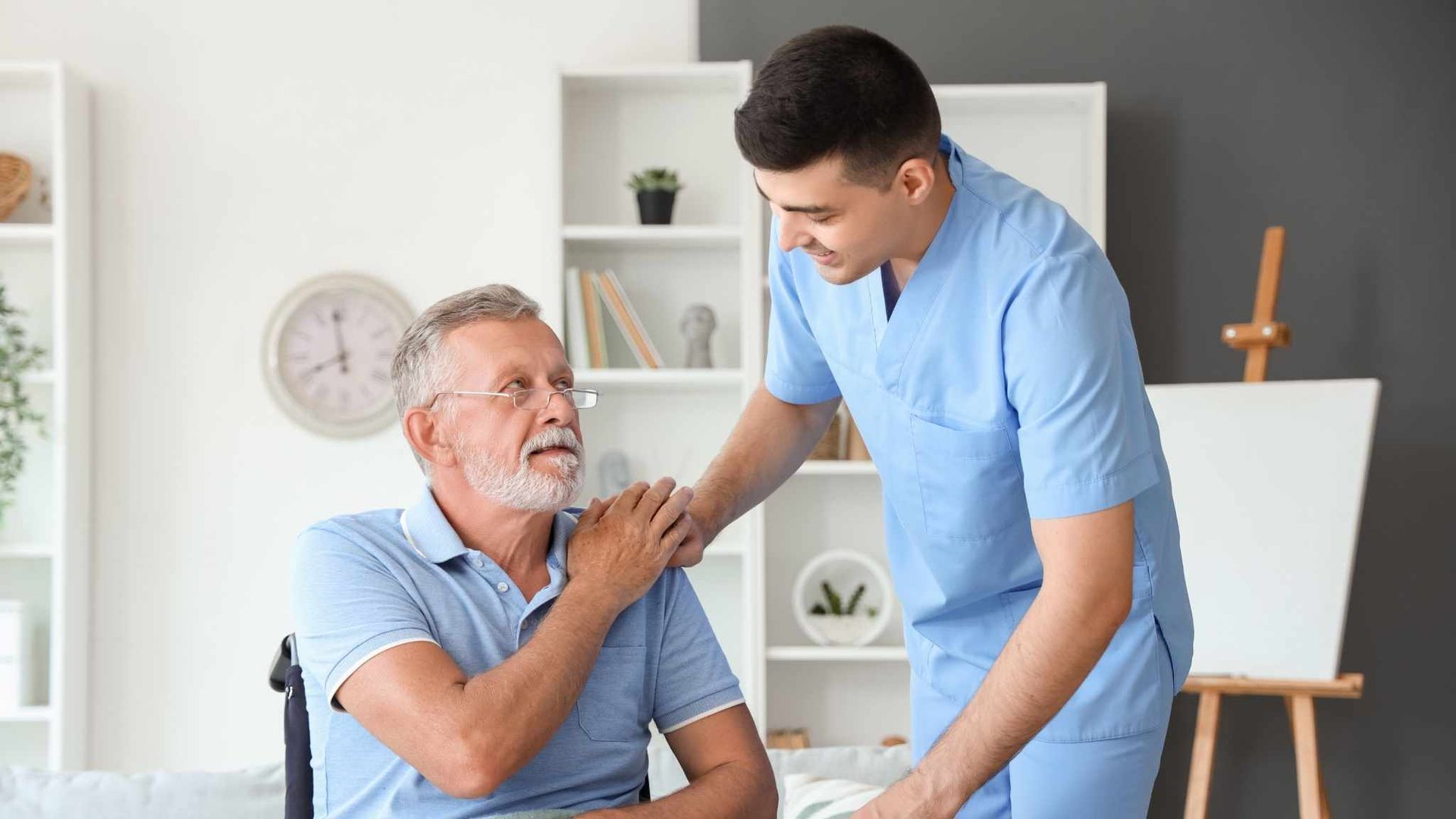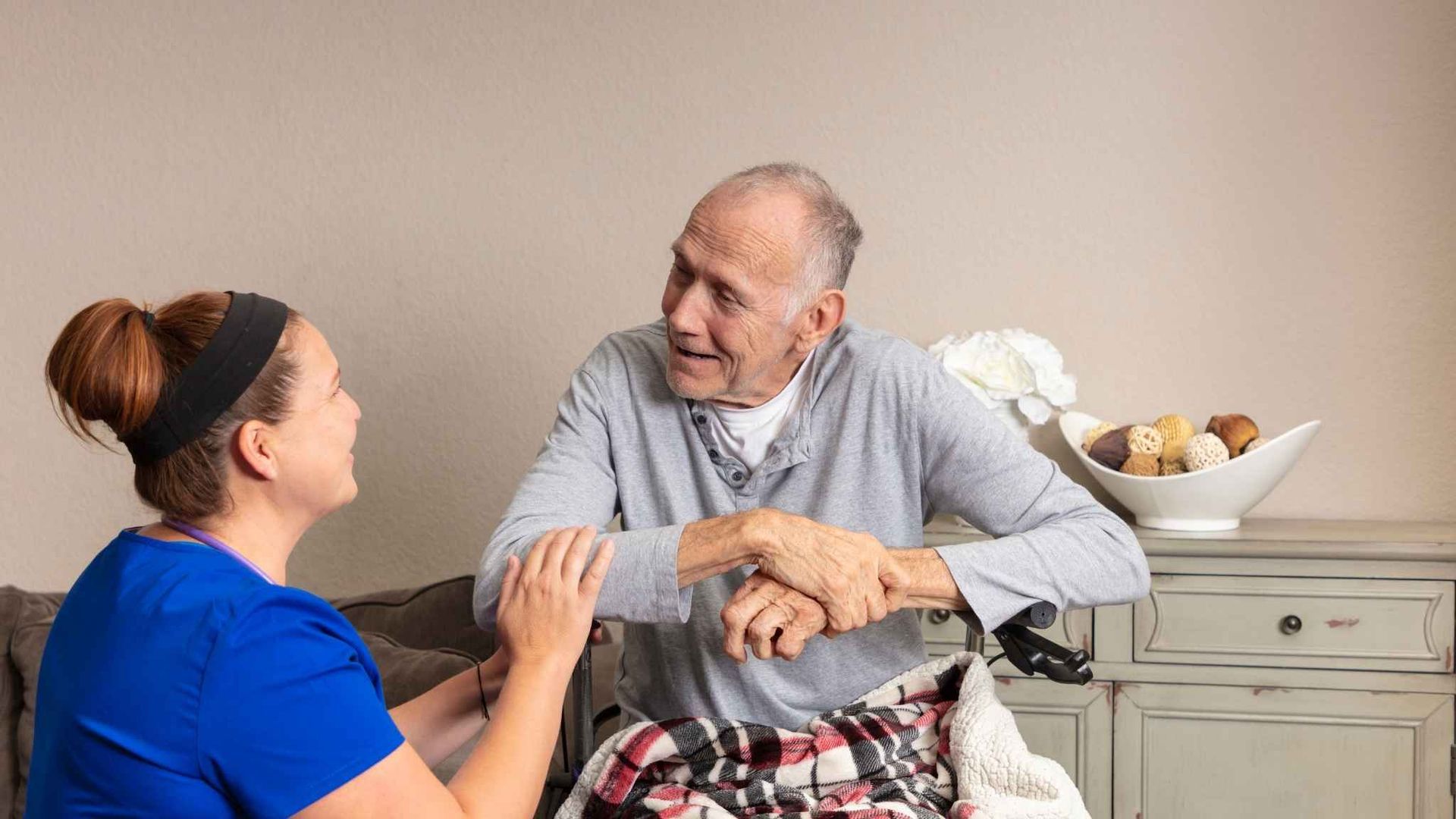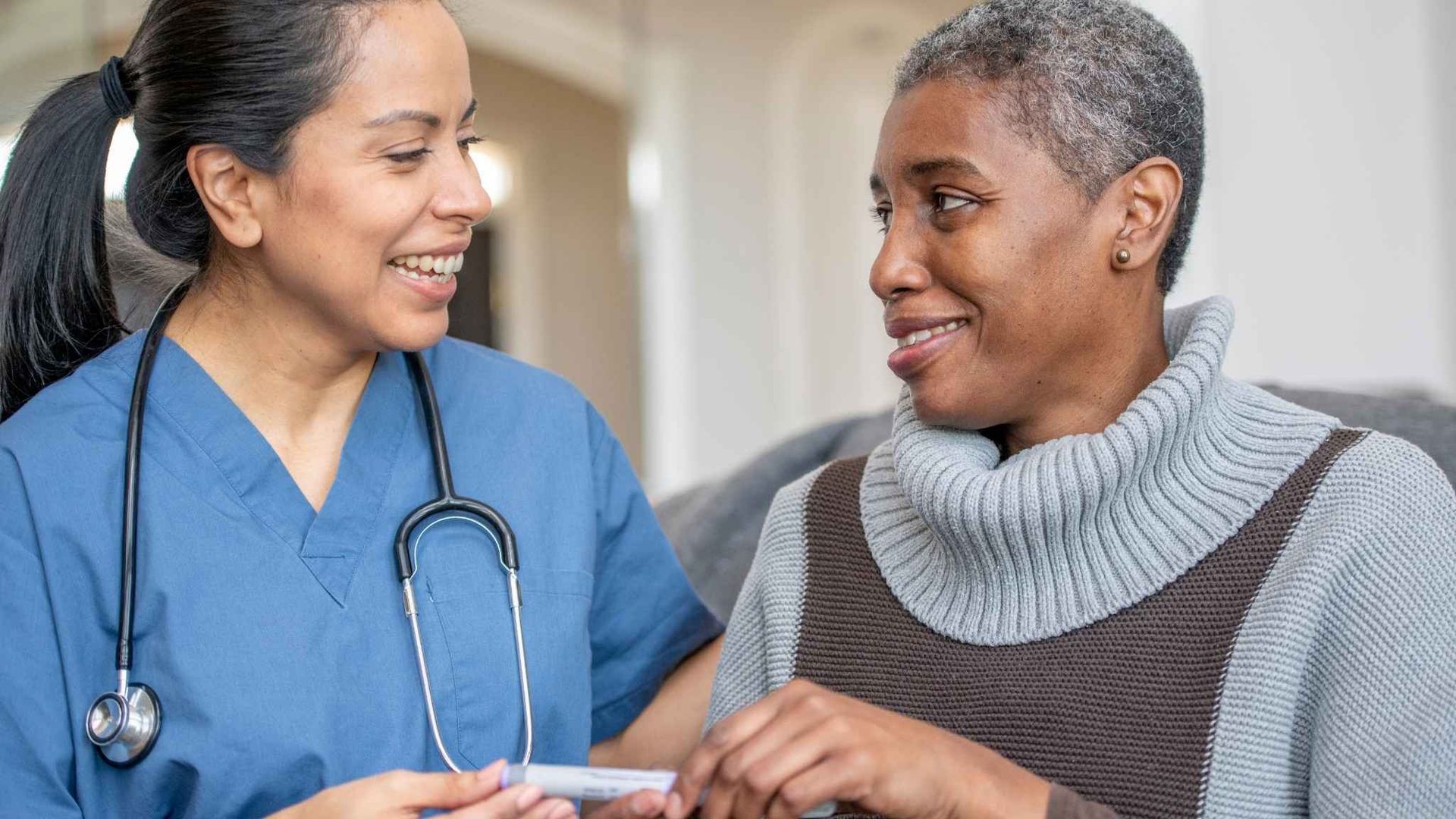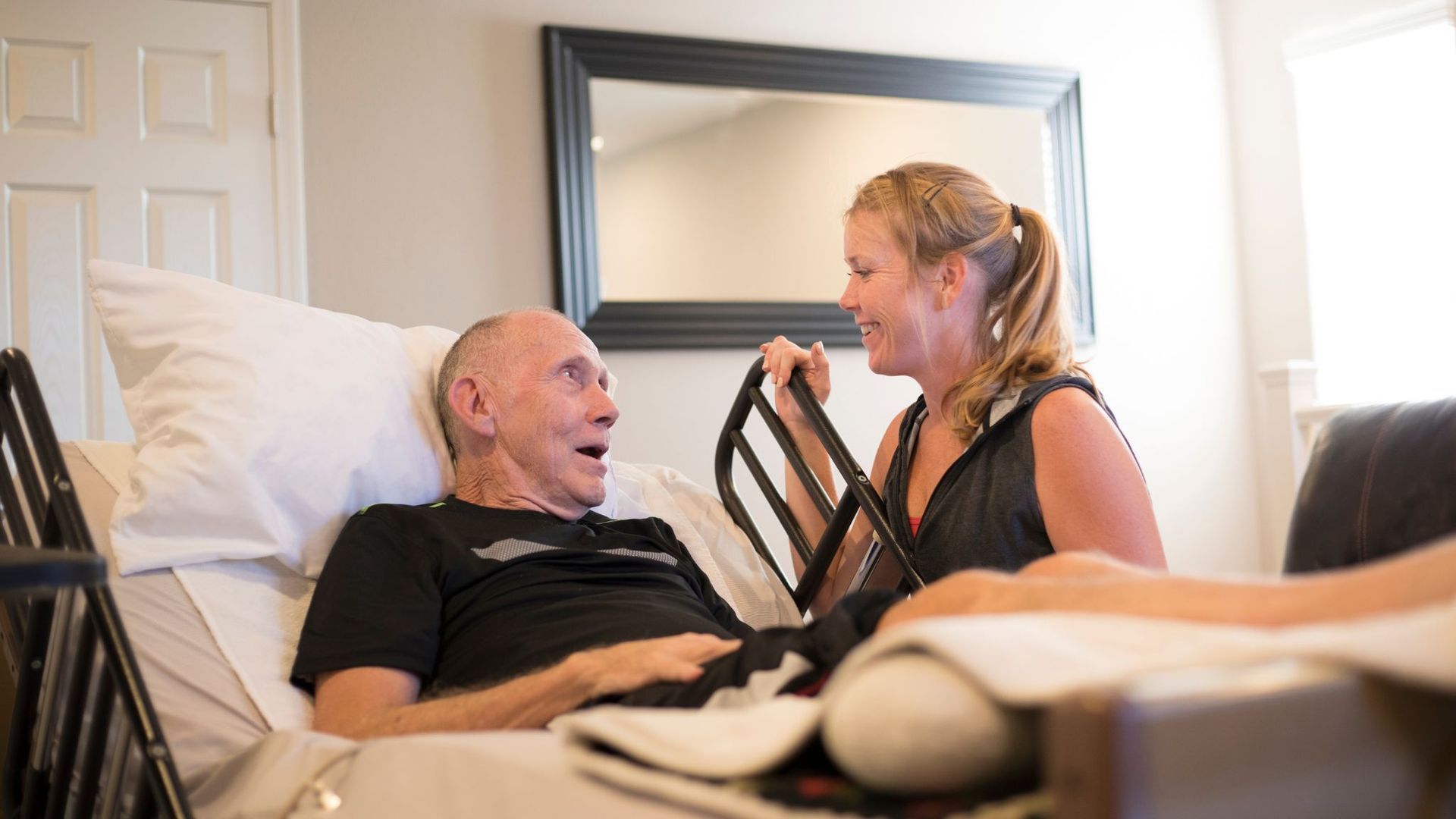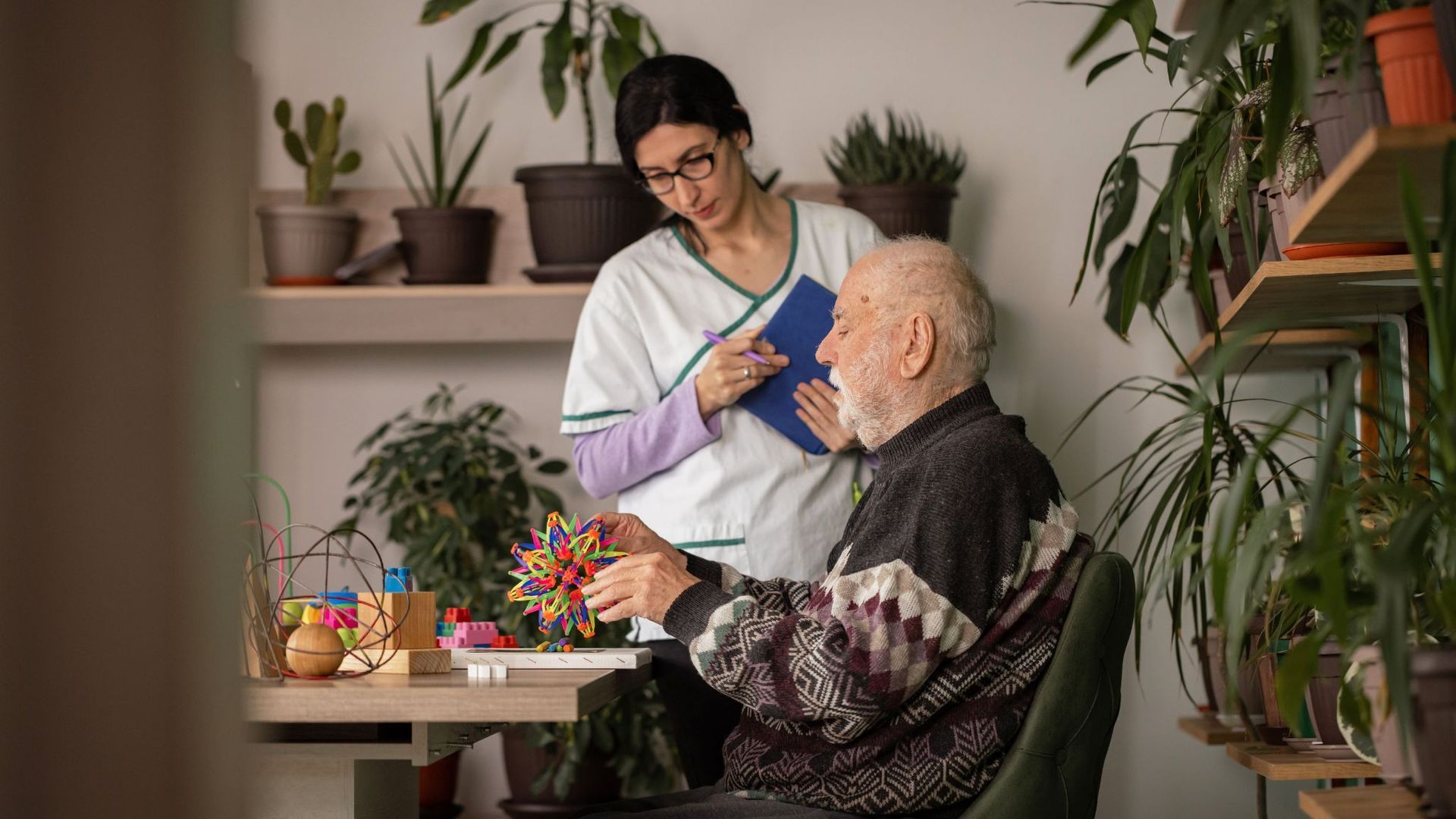Hospice Care at Home: What to Expect
When a loved one begins hospice care at home, families often have many questions about what comes next. Home care is the most common choice, giving patients professional medical support while remaining in familiar surroundings. In fact, research shows that nearly two-thirds of Medicare beneficiaries—63.6%—receive hospice services at home.
It’s natural to wonder what a typical day will look like, who will be involved in providing care, and how much help will be available. This guide walks you through what to expect from hospice care at home, showing how the level of support adapts as your loved one’s needs change.
What Happens When Hospice Care Starts at Home
The first day of hospice at home usually begins with a visit from a nurse or care coordinator. During this home hospice visit, the team of healthcare professionals reviews your loved one’s medical history, asks about their current condition, and listens to the family’s concerns.
Using this information, they will then establish a care plan tailored to the patient’s needs, outlining how visits will be scheduled, what support will be provided, and addressing any questions family members may have. Once the plan is in place, hospice delivers
medication and equipment included in your coverage to your home. These may include a hospital bed, oxygen, or pain-relief medicine.
A nurse will then explain how to use the equipment safely and demonstrate to family caregivers how to administer medication. Hospice staff will also demonstrate how to move the patient safely, check for changes in their condition, and provide comfort measures. This first day provides families with a clear understanding of hospice care at home and what to expect as care begins.
Who Visits the Home and How Often
During hospice care at home, a team of healthcare professionals will regularly visit your home to support both the patient and the family. The main
members of the hospice team who may come to the home include:
- Nurses - Manage medications, check symptoms, and adjust the care plan according to your loved one’s needs.
- Hospice Aide - Helps with bathing, grooming, and light personal care.
- Social Worker - Offers counseling and connects families to community resources.
- Chaplain - Provides spiritual care if requested by the family.
Their schedule is typically flexible and based on the patient’s condition. Visits may be once or twice a week at first, but can become more frequent as needs increase. Families also have access to 24/7 on-call support for urgent concerns, and a nurse will be available. This steady access to care is part of what hospice provides at home, and gives families peace of mind that help is always available.
Daily Hospice Routine: What Families Can Expect
Each day in hospice care at home follows a gentle routine made to support both the patient and caregiver. Hospice staff provide help with bathing, grooming, and changing linens so that your loved one remains comfortable and cared for.
Assistance with medication and monitoring symptoms are also part of the daily hospice routine. Nurses guide families on how and when to give medications and check in to see if symptoms are controlled or if they have changed. More than physical care, staff also provide emotional support and conversation to patients and families during visits.
Another important benefit of hospice care at home is
respite for the primary caregivers. Short visits from hospice staff allow family members to take a break from care while knowing that their loved one is safe with medical professionals. Families should know that while hospice staff do not stay in the home full time, they are always available for regular visits throughout each day.
What Hospice Brings Into the Home
Hospice care at home includes more than just routine visits. The healthcare team also brings equipment, medications, and supplies that make care easier for both patients and their families. Some of the most common items provided include:
- Equipment - hospital bed, oxygen, bedside commode, or mobility aids.
- Medications - focused on comfort, such as pain relief and anxiety medication.
- Supplies - gloves, wipes, wound care items, and tools for daily care.
While in-home hospice support covers the items needed for comfort and symptom management, families still typically provide meals, clothing, and other household needs. This combination of family support and professional care gives a clear picture of hospice care at home and what to expect.
What Families Do Each Day
Even with hospice support, families are still mainly in charge of care. On the first day of hospice at home, the healthcare team explains what will be needed day to day, but much of the routines are still carried out by loved ones. Families still prepare meals, provide comfort, and give medication as taught by the care team.
Primary caregivers should also keep the hospice team updated about changes in symptoms or behavior so that their loved one’s care plan can be adjusted quickly. By staying in close contact, families can be confident that their loved one is receiving care that adapts with them.
While receiving care at home, it is also important to maintain a familiar daily hospice routine. Simple daily habits, such as shared meals or quiet time together with your loved one can help them feel secure and connected. These tasks can feel overwhelming at times, but caregivers are not expected to take them on alone. Hospice professionals will be there to continue to visit, guide, and reassure families throughout the process.
How Hospice Support Changes Over Time
Hospice care is designed to adapt and change with your loved one’s condition. In the early weeks of starting the care, visits may be limited to routine check-ins, but as symptoms progress, the hospice team may increase the frequency of care. A nurse may come more often, and additional staff may be scheduled per week to provide support during each home hospice visit.
Families may also begin receiving
grief counseling, spiritual care from a chaplain, or volunteer visits that provide companionship and help. This ensures that care is always aligned with what the patient is comfortable with and what the family needs.
Because the care plan is regularly updated and communicated, families do not have to guess what happens during hospice care. The hospice team is there to explain each change, prepare caregivers for the next stage, and make sure support is as steady as their journey.
Talking to Your Family About What to Expect
Starting hospice can be emotional for your whole family, but clear conversations can help reduce worry. Preparing siblings, children, and other caregivers gives everyone a chance to understand the journey ahead and ask their own questions.
Here are some tips for talking with your family about hospice:
- Be honest and simple. Explain that hospice care is focused on your loved one’s comfort rather than finding a cure.
- Share that support is available. Let them know that nurses, aides, and counselors will be visiting.
- Encourage questions. Remind your family that no question is too small and that hospice staff are ready to listen.
- Reassure them that help is ongoing. The hospice team will maintain routine visits and adjust your loved one’s care as their needs adapt.
Following these simple steps can help family members feel less anxious and more confident about what to expect in the days ahead.
Valley Oaks is Here for You
You do not have to figure this out alone. Valley Oaks Hospice is here to guide you through each stage of hospice care at home. Our team is ready to explain what to expect, answer every question, and help each family feel steady and supported.
If you are considering in-home hospice support for your loved one,
reach out to Valley Oaks today. We will guide you through the process, arrange your first visits, and ensure you understand the type of support available.
Take the first step towards comfort and peace of mind.
Contact us now and let us help you bring compassionate care into your home when you need it most.

